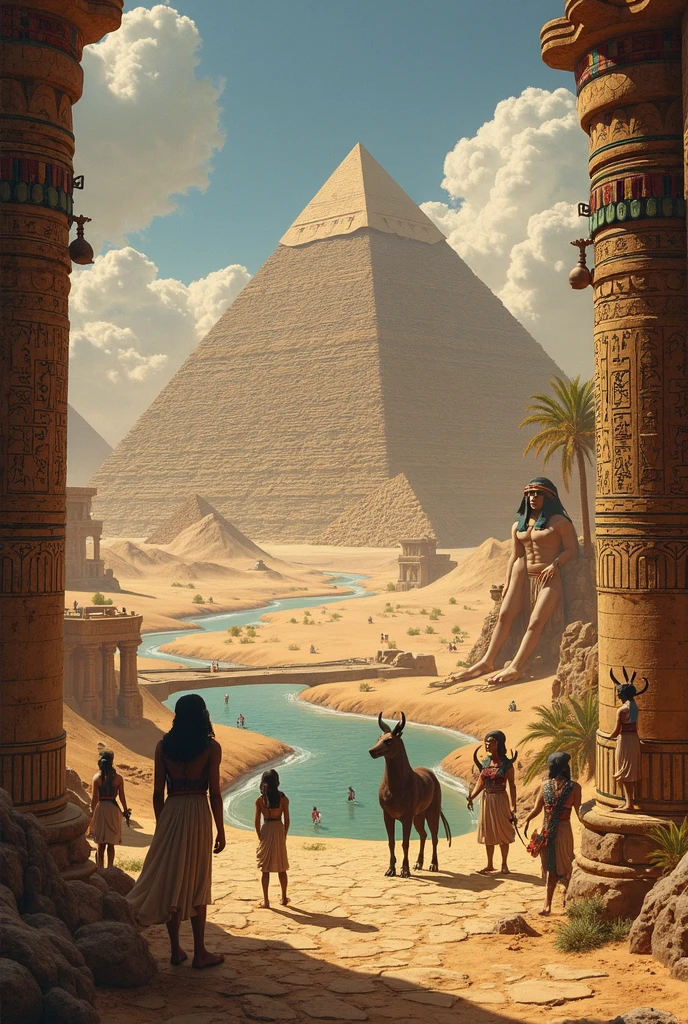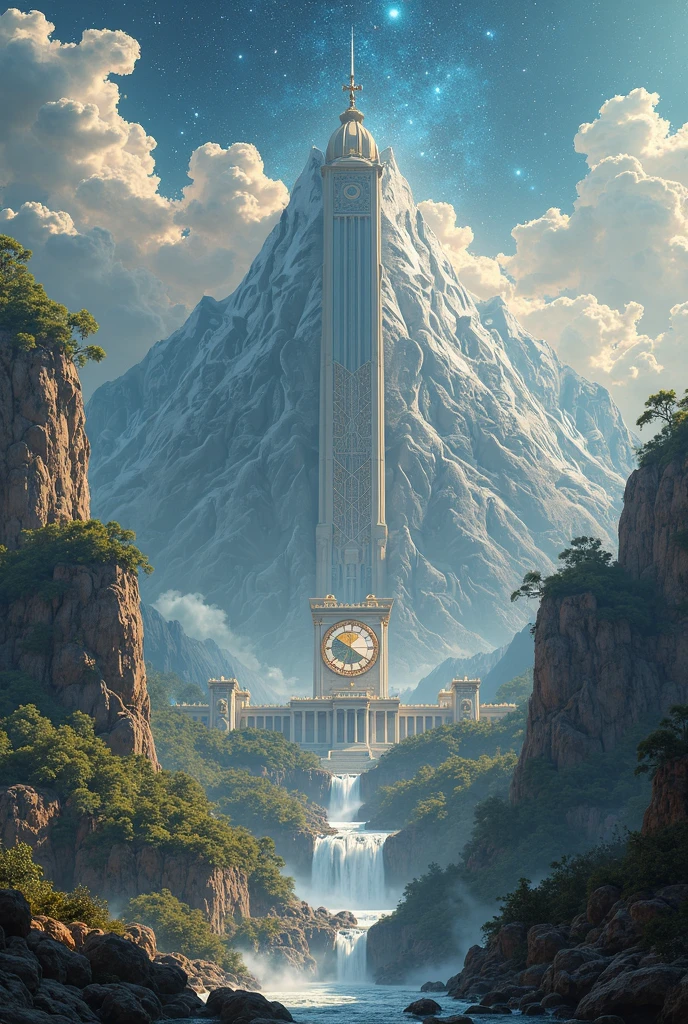Aztec Mythology: Gods, Legends, and Cosmic Battles
The rich tapestry of Aztec mythology is filled with powerful deities, epic creation stories, and rituals that shaped one of Mesoamerica’s most fascinating civilizations. Among its pantheon, Huitzilopochtli, the god of war and the sun, stands as a central figure, alongside other key gods like Quetzalcoatl and Tezcatlipoca. This article explores their roles, myths, and the significance of sacrifices in maintaining cosmic order.
The Pantheon of Aztec Gods
The Aztecs worshipped a complex array of gods, each governing different aspects of life, nature, and the cosmos. Below is a table highlighting the most important deities:
| God | Domain | Symbol |
|---|---|---|
| Huitzilopochtli | War, Sun | Hummingbird, Serpent |
| Quetzalcoatl | Wisdom, Wind | Feathered Serpent |
| Tezcatlipoca | Night, Sorcery | Obsidian Mirror |
| Tlaloc | Rain, Fertility | Water Jar |
Huitzilopochtli: The Warrior Sun God
Huitzilopochtli, whose name means “Hummingbird of the South,” was the patron god of the Aztecs and a symbol of their military might. Born from the goddess Coatlicue, he famously defeated his sister Coyolxauhqui and her brothers, the Centzon Huitznahua, in a myth that explained the daily battle of the sun against darkness.
Key Aspects of Huitzilopochtli
- Role: Protector of Tenochtitlan and guide during the Aztec migration.
- Rituals: Human sacrifices were offered to sustain his strength.
- Symbolism: Represented the eternal struggle between light and darkness.
Quetzalcoatl: The Feathered Serpent
Quetzalcoatl, the god of wind and wisdom, was revered as a creator deity who brought knowledge, arts, and agriculture to humanity. Unlike Huitzilopochtli, he opposed human sacrifices, favoring instead offerings of flowers and incense.
Quetzalcoatl’s Legacy
- Invented the calendar and taught writing.
- Associated with the planet Venus.
- Central to the myth of the Five Suns, which describes the cyclical creation and destruction of the world.
Tezcatlipoca: The Shadowy Trickster
Tezcatlipoca, the “Smoking Mirror,” was a god of destiny, night, and sorcery. Often depicted with a missing foot, he was both feared and respected for his unpredictable nature. His rivalry with Quetzalcoatl led to the fall of the legendary city of Tollan.
Tezcatlipoca’s Influence
- Patron of warriors and kings.
- Symbolized by an obsidian mirror that revealed hidden truths.
- Demanded rigorous penance and sacrifices from his followers.
The Five Suns: Aztec Cosmology
Aztec mythology describes five eras, or “Suns,” each destroyed by cataclysms. The current era, the Fifth Sun, is sustained by Huitzilopochtli and requires human blood to prevent annihilation. This belief justified the practice of large-scale sacrifices.
| Sun | Ruling God | Destruction |
|---|---|---|
| First Sun | Tezcatlipoca | Jaguars |
| Second Sun | Quetzalcoatl | Hurricane |
| Third Sun | Tlaloc | Fire Rain |
| Fourth Sun | Chalchiuhtlicue | Flood |
| Fifth Sun | Huitzilopochtli | Pending (Earthquakes) |
Rituals and Sacrifices in Aztec Religion
To nourish the gods and maintain cosmic balance, the Aztecs performed elaborate ceremonies, including heart extraction and bloodletting. Huitzilopochtli was particularly associated with these rites, as his victory over darkness required constant energy.
Types of Sacrifices
- Heart Extraction: The most common form, performed atop pyramids.
- Gladiatorial Sacrifice: Captive warriors fought in ritual combat.
- Bloodletting: Nobles pierced their tongues or ears as offerings.
For further reading on Aztec mythology, explore these resources: Encyclopaedia Britannica, The Met Museum, Ancient History Encyclopedia.
Descubre más artículos fascinantes en nuestra web y únete a nuestra comunidad en facebook.com/zatiandrops.
While Huitzilopochtli, Quetzalcoatl, and Tezcatlipoca dominate Aztec mythology, the pantheon included numerous other deities with specialized domains. These lesser-known gods played crucial roles in daily life, agriculture, and even the underworld.
Xipe Totec: The Flayed God
Xipe Totec, the god of agriculture and renewal, was depicted wearing the skin of a sacrificial victim. His rituals symbolized the shedding of old layers to make way for new growth, much like corn husks.
Key Aspects of Xipe Totec
- Role: Patron of goldsmiths and seasonal renewal.
- Rituals: Priests wore flayed skins for 20 days during festivals.
- Symbolism: Represented the cycle of death and rebirth in nature.
Mictlantecuhtli: The Lord of the Underworld
Mictlantecuhtli ruled Mictlān, the Aztec underworld, alongside his wife Mictecacihuatl. Souls who died of natural causes journeyed through his realm, facing challenges like rivers of blood and wind made of knives.
| Underworld Level | Challenge | Duration |
|---|---|---|
| Itzcuintlan | River of Blood | 4 years |
| Tepeme Monamictlan | Clashing Mountains | 4 years |
| Iztecayan | Obsidian Wind | 4 years |
Chalchiuhtlicue: The Jade Skirted Water Goddess
As the goddess of lakes, rivers, and childbirth, Chalchiuhtlicue was both nurturing and destructive. She presided over the Fourth Sun, which ended in a catastrophic flood.
Chalchiuhtlicue’s Dual Nature
- Blessings: Protected newborns and ensured clean water.
- Curses: Could summon floods to punish humanity.
- Iconography: Often shown with blue-green garments and aquatic symbols.
Beyond grand cosmic battles, Aztec myths influenced everyday activities, from farming to warfare. Omens, dreams, and animal behavior were interpreted as divine messages.
The Tonalpohualli: The Sacred Calendar
The Tonalpohualli, a 260-day ritual calendar, guided ceremonies and personal destinies. Each day was associated with a deity, shaping decisions about marriage, travel, and warfare.
Example of Day Signs
- Cipactli (Crocodile) – Ruled by Tonacatecuhtli, a day for new beginnings.
- Ocelotl (Jaguar) – Linked to Tezcatlipoca, signifying stealth and power.
- Quiahuitl (Rain) – Governed by Tlaloc, ideal for planting crops.
Omens and Prophecies
The Aztecs believed in tetlazolmictiliztli (divine signs), such as eclipses or unusual animal behavior. For example, the appearance of an owl signaled impending death, while a comet foretold war.
| Omen | Meaning | Associated Deity |
|---|---|---|
| Solar Eclipse | Huitzilopochtli’s weakness | Huitzilopochtli |
| Two-Headed Calf | Famine | Chicomecoatl |
| Earthquake | Fifth Sun’s end | Tezcatlipoca |
Temples, sculptures, and codices vividly depicted mythological scenes, serving as both religious tools and political propaganda.
The Templo Mayor: A Cosmic Symbol
Tenochtitlan’s Templo Mayor represented Coatepec, the mythical serpent mountain where Huitzilopochtli defeated Coyolxauhqui. Its twin shrines honored Huitzilopochtli (war) and Tlaloc (rain).
Key Features
- Construction: Aligned with the equinoxes for solar observations.
- Offerings: Over 7,000 ritual objects, including jade and coral, were buried within.
- Discovery: The Coyolxauhqui Stone, found in 1978, depicts the dismembered moon goddess.
Codex Borgia: A Visual Mythology
This pre-Columbian manuscript illustrates deities, rituals, and the Tonalpohualli. Its vivid imagery includes:
- Quetzalcoatl’s descent into Mictlān to retrieve bones for humanity.
- Tezcatlipoca’s jaguar transformation.
- Bloodletting ceremonies performed by nobility.
Modern Mexican culture retains echoes of Aztec myths, from Day of the Dead traditions to place names like Chapultepec (“Hill of the Grasshopper”).
Surviving Myths in Folklore
Stories like La Llorona (the Weeping Woman) may derive from Cihuacoatl, a goddess who warned of conquest. Similarly, the Nahual shapeshifter tradition stems from Tezcatlipoca’s animal forms.
Aztec Mythology in Popular Media
From video games (SMITE’s Aztec pantheon) to literature (The Aztec Myth), these ancient stories continue to inspire.
For deeper insights, visit Mexicolore’s Aztec section.
Descubre más artículos fascinantes en nuestra web y únete a nuestra comunidad en facebook.com/zatiandrops.
Ehecatl: The Wind God
Ehecatl, a manifestation of Quetzalcoatl, was the god of wind who cleared paths for rain and symbolized the breath of life. Temples dedicated to him were circular to minimize wind resistance, reflecting the Aztecs’ keen observation of nature.
Ehecatl’s Influence
- Role: Swept away clouds to allow Tlaloc’s rains.
- Iconography: Depicted with a duckbill mask and swirling motifs.
- Legacy: Survives in modern Mexican phrases like “aire de Ehecatl” (Ehecatl’s wind).
Coatlicue: The Mother of Gods
Coatlicue, “Serpent Skirt,” was the earth goddess and mother of Huitzilopochtli. Her statue, discovered in 1790, depicts her wearing a skirt of writhing snakes and a necklace of human hearts, symbolizing fertility and sacrifice.
| Aspect | Symbol | Cultural Impact |
|---|---|---|
| Creation | Gave birth to the moon and stars | Inspired maternal rituals |
| Destruction | Devoured corpses during wars | Linked to agricultural cycles |
Aztec Mythology and Astronomy
The Aztecs mapped their gods onto celestial bodies. Citlalicue (the Milky Way) was seen as a cosmic serpent, while Orion’s Belt represented Mixcoatl, the god of hunting.
Celestial Alignments
- Venus: Quetzalcoatl’s morning/evening star duality.
- Pleiades: Called “Tianquiztli” (marketplace), signaling festival dates.
- Solar Eclipses: Interpreted as celestial battles between gods.
Ritual Music and Dance
Ceremonies featured huehuetl (drums) and teponaztli (log drums) to invoke deities. Dances mimicked myths, like the volador ritual, where performers spiraled from poles to honor the sun.
Instruments of the Gods
- Ayacachtli: Rattles filled with seeds for Tlaloc’s storms.
- Omichicahuaztli: Bone scraper used in underworld invocations.
- Conch Shells: Ehecatl’s “wind” instruments.
Aztec Hero Twins: Popocatepetl and Iztaccihuatl
This tragic romance parallels Maya Hero Twins lore. The warrior Popocatepetl and princess Iztaccihuatl were transformed into volcanoes—a tale explaining Mexico’s landscape.
| Character | Symbolism | Modern Reference |
|---|---|---|
| Popocatepetl | Eternal vigilance (smoking peak) | Active volcano near Mexico City |
| Iztaccihuatl | Sleeping purity (snow-capped peak) | Dormant volcano |
Aztec Alchemy: The Obsidian Mirror
Tezcatlipoca’s obsidian mirror (ilhuicatl) wasn’t just symbolic—it was a divination tool. Priests used polished obsidian for scrying, believing it revealed Mictlān’s secrets.
Ritual Uses of Obsidian
- Sacrificial Knives: Razor-sharp tecpatl blades for heart extraction.
- Spiritual Portals: Mirrors placed in tombs to guide souls.
- Medical Tools: Surgical precision for cranial surgeries.
The Flower Wars: Ritual Combat
Unlike territorial battles, xochiyaoyotl (“flower wars”) were staged to capture prisoners for sacrifice. Opponents from rival city-states like Tlaxcala fought with bladed clubs (macuahuitl).
Rules of Engagement
- No killing—only disabling strikes to capture foes alive.
- Fought during Venus’s ascension (Quetzalcoatl’s influence).
- Warriors wore tzitzimitl demon masks to terrify enemies.
Aztec Afterlife Beliefs
Contrary to a single underworld, the Aztecs believed souls went to different realms based on death circumstances:
| Afterlife | Who Went There | Deity Ruler |
|---|---|---|
| Tonatiuhichan | Warriors, sacrificial victims | Huitzilopochtli |
| Tlalocan | Drowned or lightning-struck | Tlaloc |
| Chichihuacuauhco | Deceased children | Chicomecoatl |
Aztec Mythology in Cuisine
Foods like chia seeds and amaranto (amaranth) had divine ties. Amaranth dough shaped into god figurines (tzoalli) were eaten during festivals.
Sacred Foods
- Pulque: Fermented agave drink linked to Mayahuel (fertility goddess).
- Chocolate: Reserved for nobility, associated with Quetzalcoatl.
- Maize: Gift from Cinteotl, the maize god.
For further exploration, see: World History Encyclopedia, Harvard’s Aztec Collection, Archaeology Magazine.
Descubre más artículos fascinantes en nuestra web y únete a nuestra comunidad en facebook.com/zatiandrops.
Nanahuatzin: The Humble Sun God
In contrast to the warrior Huitzilopochtli, Nanahuatzin was a diseased god who sacrificed himself to become the Fifth Sun. His myth emphasizes humility—while the proud god Tecuciztecatl hesitated to jump into the sacrificial fire, Nanahuatzin leaped without hesitation, transforming into the sun.
Symbolism of Nanahuatzin
- Self-Sacrifice: Embodied the ideal of giving oneself for cosmic balance.
- Duality: His pimpled skin represented both imperfection and sacred power.
- Modern Parallel: Inspires Mexican sayings about inner strength.
The Tzitzimime: Star Demons
These skeletal female spirits, led by Tzitzimitl, were feared as celestial destroyers. During solar eclipses, they descended to devour humans—a belief that intensified sacrificial rituals to strengthen Huitzilopochtli against them.
| Tzitzimitl | Domain | Protection Ritual |
|---|---|---|
| Itzpapalotl | Obsidian Butterfly | Spine bloodletting |
| Cihuacoatl | Childbirth | Amulet offerings |
Aztec Magic: The Naualli Shapeshifters
Priests called naualli could transform into animals—a gift from Tezcatlipoca. Jaguar shamans (ocelopetlatl) were particularly revered for their battle prophecies.
Shapeshifting Techniques
- Ingesting sacred mushrooms (teonanácatl).
- Wearing flayed animal skins during rituals.
- Using obsidian mirrors to “see” alternate forms.
The Legend of Aztlán
The mythical homeland Aztlán (“Place of Herons”) was the Aztec Eden. According to the Codex Boturini, Huitzilopochtli led their migration southward, guided by an eagle perched on a cactus—the symbol now on Mexico’s flag.
Key Migration Sites
- Chicomoztoc: The “Seven Caves” where tribes originated.
- Coatepec: Where Huitzilopochtli’s birth myth unfolded.
- Chapultepec: Final stop before founding Tenochtitlan.
Aztec Divination: The Tonalamatl
This bark-paper book contained 260-day Tonalpohualli prophecies. Diviners (tonalpouhque) interpreted day signs alongside “night lords” (13 deities ruling nighttime hours).
| Day Sign + Night Lord | Meaning | Example |
|---|---|---|
| Cipactli + Xiuhtecuhtli | Favorable for travel | Merchants departed |
| Ozomatli + Mictlantecuhtli | Death omen | Postpone battles |
Aztec Sacred Animals
Animals were divine messengers. The quetzal bird symbolized Quetzalcoatl, while Xolotl, the dog-headed god, guided souls to Mictlān—explaining why dogs were buried with the dead.
Animal Symbolism
- Jaguar: Tezcatlipoca’s nocturnal power.
- Hummingbird: Huitzilopochtli’s warrior spirit.
- Butterfly: Fallen warriors reborn.
The Fall of the Aztec Empire: Mythological Omens
According to the Florentine Codex, eight supernatural signs foretold the Spanish conquest, including:
- A comet streaking across the sky (Quetzalcoatl’s return).
- The temple of Huitzilopochtli bursting into flames.
- Weeping statues of Tlaloc.
Aztec Mythology in Modern Archaeology
Recent discoveries continue to validate myths. In 2020, a tower of skulls at the Templo Mayor confirmed accounts of tzompantli (skull racks) described in conquest-era texts.
Key Findings
- Child Sacrifices: Bones with Ehecatl markings found at Tenochtitlan’s perimeter.
- Jade Offerings: Linked to Quetzalcoatl’s paradise, Tamoanchan.
- Gold Artifacts: Depicting the “Fire Serpent” Xiuhcoatl.
For further research, consult: Mesoweb’s Aztec Resources, UNAM’s Archaeological Studies, FAMSI’s Aztec Codices.
Descubre más artículos fascinantes en nuestra web y únete a nuestra comunidad en facebook.com/zatiandrops.


